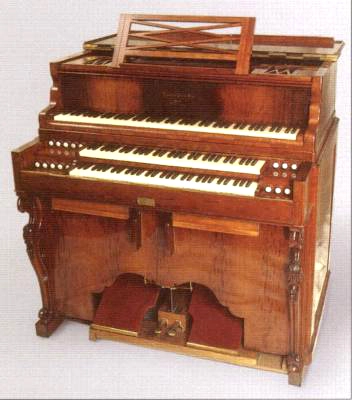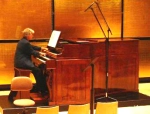
Raymond Murray Schafer (1933–2021), the Canadian composer, author, educator, and ecologist who coined the term soundscape, died on 14 August at 88. Through the years Schafer’s concept of soundscape has inspired scholars in not only musicology and ethnomusicology, but also history, anthropology, and more.
In 1969, with the aim of “finding solutions for an ecologically balanced soundscape that harmonizes the relationship between human society and its sound environment,” Schafer founded the world soundscape project at the Simon Fraser University. Based on this project, his book, The tuning of the world, was published in 1977 (reprinted in 1993 and retitled as The soundscape: Our sonic environment and the tuning of the world). Schafer’s visualization of the sound environment led to the concept of soundscape, which refers not only to the sounds in people’s environments, but also to the interactions between people, their hearing, their sound environment, and their social environment.
The concept of soundscape inspired new approaches for musicological research. Since Schafer first suggested this term, generations of scholars not only focused on sound itself, but also interpreted various cultural phenomena from the perspective of sound: echo, noise, silence… these terms are seemingly abstract, yet each contains deep meaning and controversy. Since the 1970s, the sound environment we live in has been changing rapidly. Considering the harmony and balance that the concept of soundscape has emphasized from the very beginning, what will be the relationship between human communities and ecology in the future? Please join RILM in following recent publications on sound studies.
(Introduced and compiled by Liu Xintong)

Schafer, R. Murray. The soundscape: Our sonic environment and the tuning of the world (Rochester: Destiny, 1993). [RILM Abstracts of Music Literature, 1993-3992]
Abstract: Studies the evolution of soundscapes in connection with culture, urban development, and technology. The soundscape—a term coined by the author—is our sonic environment, the ever-present array of noises with which we all live. Beginning with the primordial sounds of nature, we have experienced an ever-increasing complexity of our sonic surroundings. As civilization develops, new noises rise up around us: from the creaking wheel, the clang of the blacksmith’s hammer, and the distant chugging of steam trains to the “sound imperialism” of airports, city streets, and factories. The author contends that we now suffer from an overabundance of acoustic information and a proportionate diminishing of our ability to hear the nuances and subtleties of sound. Our task, he maintains, is to listen, analyze, and make distinctions. As a society we have become more aware of the toxic wastes that can enter our bodies through the air we breathe and the water we drink. In fact, the pollution of our sonic environment is no less real. Schafer emphasizes the importance of discerning the sounds that enrich and feed us and using them to create healthier environments. To this end, he explains how to classify sounds, appreciating their beauty or ugliness, and provides exercises and “soundwalks” to help us become more discriminating and sensitive to the sounds around us. This book is a pioneering exploration of our acoustic environment, past and present, and an attempt to imagine what it might become in the future.
The study of soundscape has developed considerably since Schafer first used the term. However, Schafer’s own work and his world soundscape project have received much criticism, primarily because of his way of treating sound as an objectified presence, ignoring its experiential nature, and his project’s failure to include the sound cultures of Canada’s First Nation peoples. However, Schafer’s concept of soundscape opened up new horizons in sound studies, and subsequent scholars have continued to build on his foundation to expand the theoretical framework of soundscape. Below are some examples of cutting-edge research on soundscape.

Abe, Marié. Resonances of chindon-ya: Sounding space and sociality in contemporary Japan. Music/culture (Middletown: Wesleyan University Press, 2018). [RILM Abstracts of Music Literature, 2018-3821]
Abstract: Investigates the intersection of sound, public space, and sociality in contemporary Japan. Chindon-ya, dating back to the 1840s, are ostentatiously costumed street musicians who publicize a business by parading through neighborhood streets. Historically not considered music, but part of the everyday soundscape, this vernacular performing art provides a window into shifting notions of musical labor, the politics of everyday listening and sounding, and street music at social protest in Japan. Against the background of long-term economic downturn, growing social precarity, and the visually and sonically saturated urban streets of Japan, this book examines how this seemingly outdated means of advertisement has recently gained traction as an aesthetic, economic, and political practice after decades of inactivity. It challenges Western conceptions of listening that have normalized the way we think about the relationship between sound, space, and listening subjects, and advances a growing body of interdisciplinary scholarship that examines the ways social fragmentation is experienced and negotiated in post-industrial societies.

Ochoa Gautier, Ana María. Aurality: Listening and knowledge in nineteenth-century Colombia. Sign, storage, transmission (Durham: Duke University Press, 2014). [RILM Abstracts of Music Literature, 2014-65359]
Abstract: Explores how listening has been central to the production of notions of language, music, voice, and sound that determine the politics of life. Drawing primarily from 19th-century Colombian sources, the author locates sounds produced by different living entities at the juncture of the human and nonhuman. An “acoustically tuned” analysis of a wide array of texts reveals multiple debates on the nature of the aural. These discussions were central to a politics of the voice harnessed in the service of the production of different notions of personhood and belonging. Thus, Latin America and the Caribbean emerge as a historical site where the politics of life and the politics of expression inextricably entangle the musical and the linguistic, knowledge and the sensorial.

Daughtry, J. Martin. Listening to war: Sound, music, trauma and survival in wartime Iraq (New York: Oxford University Press, 2015). [RILM Abstracts of Music Literature, 2015-10080]
Abstract: A groundbreaking study of the centrality of listening to the experience of modern warfare. Based on years of ethnographic interviews with U.S. military service members and Iraqi civilians, as well as on direct observations of wartime Iraq, the author reveals how these populations learned to extract valuable information from the ambient soundscape while struggling with the deleterious effects that it produced in their ears, throughout their bodies, and in their psyches. He examines the dual-edged nature of sound—its potency as a source of information and a source of trauma—within a sophisticated conceptual frame that highlights the affective power of sound and the vulnerability and agency of individual auditors. By theorizing violence through the prism of sound and sound through the prism of violence, the author provides a new vantage point for examining these strangely conjoined phenomena. Two chapters dedicated to wartime music in Iraqi and U.S. military contexts show how music was both an important instrument of the military campaign and the victim of a multitude of violent acts throughout the war.

Dillon, Emma. The sense of sound: Musical meaning in France (1260–1330). New cultural history of music (Oxford: Oxford University Press, 2012). [RILM Abstracts of Music Literature, 2012-25429]
Abstract: Among the most memorable innovations of music and poetry in 13th-century France was a genre that seemed to privilege sound over sense. The polytextual motet is especially well-known to scholars of the Middle Ages for its tendency to conceal complex allegorical meaning in a texture that, in performance, made words less, rather than more, audible. What did it mean to create a musical effect so potentially independent from the meaning of words? Is it possible such supermusical effects themselves had significance? A radical recontextualization of French song in the heyday of the motet ca. 1260–1330 makes the case for listening to musical sound against a range of other potently meaningful sonorities, often premised on non-verbal meaning. In identifying new audible interlocutors to music, our ears are opened to a broad spectrum of sounds often left out of historical inquiry, from the hubbub of the medieval city; to the eloquent babble of madmen; to the violent clamor of charivari; to the charismatic chatter of prayer. Drawing on a rich array of artistic evidence (music, manuscripts, poetry, and images) and contemporary cultural theory locates musical production in this period within a larger cultural environment concerned with representing sound and its emotional, ethical, and social effects.

Manabe, Noriko. The revolution will not be televised: Protest music after Fukushima (New York: Oxford University Press, 2015). [RILM Abstracts of Music Literature, 2015-13996]
Abstract: Nuclear power has been a contentious issue in Japan since the 1950s, and in the aftermath of the Fukushima nuclear power plant disaster, the conflict has only grown. Government agencies and the nuclear industry continue to push a nuclear agenda, while the mainstream media adheres to the official line that nuclear power is Japan’s future. Public debate about nuclear energy is strongly discouraged. Nevertheless, antinuclear activism has swelled into one of the most popular and passionate movements in Japan, leading to a powerful wave of protest music. Music has played a central role in expressing antinuclear sentiments and mobilizing political resistance in Japan. A combination of musical analysis with ethnographic participation offers an innovative typology of the spaces central to the performance of protest music—cyberspace, demonstrations, festivals, and recordings. These four spaces encourage different modes of participation and methods of political messaging. The openness, mobile accessibility, and potential anonymity of cyberspace have allowed musicians to directly challenge the ethos of silence that permeated Japanese culture post-Fukushima. Moving from cyberspace to real space, the author shows how the performance and reception of music played at public demonstrations are shaped by the urban geographies of Japanese cities. While short on open public space, urban centers in Japan offer protesters a wide range of governmental and commercial spaces in which to demonstrate, with activist musicians tailoring their performances to the particular landscapes and soundscapes of each. Music festivals are a space apart from everyday life, encouraging musicians and audience members to freely engage in political expression through informative and immersive performances. Conversely, Japanese record companies and producers discourage major-label musicians from expressing political views in recordings, forcing antinuclear musicians to express dissent indirectly: through allegories, metaphors, and metonyms.

Schwarz, Arman. Puccini’s soundscapes: Realism and modernity in Italian opera. Centro Studi Giacomo Puccini: Premio rotary Giacomo Puccini ricerca 2 (Firenze: Leo S. Olschki, 2018). [RILM Abstracts of Music Literature, 2018-58613]
Abstract: From the bells in Tosca and the birdcalls in Madama Butterfly to the horns and sirens in Il tabarro and the music box melodies that inspired Turandot, Puccini’s operas rely to an unprecedented degree on realistic and seemingly unmediated acoustic objects. Focusing on the pervasive if little-discussed aspect of the composer’s art, presented are two categories of sound and realism to rethink the shape of Puccini’s career, and to offer new interpretations of many of his major works, as well as those of his contemporaries. It asks how Italian composers responded to some of the fundamental transformations of auditory culture during the fin-de-siècle, and resituates their works within the discourses (aesthetic, political, and technological) of Italian modernity.

Rasmussen, Anne K. Women, the recited Qur’an, and Islamic music in Indonesia (Berkeley: University of California Press, 2010). [RILM Abstracts of Music Literature, 2010-6148]
Abstract: Going to the heart of religious musical praxis in Indonesia, home to the largest Muslim population in the world, this book explores a rich public soundscape, where women recite the divine texts of the Qur’ān, and where an extraordinary diversity of Arab-influenced Islamic musical styles and genres, also performed by women, flourishes. Based on unique and revealing ethnographic research beginning at the end of Suharto’s New Order and continuing into the era of Reformation, the book considers the powerful role of music in the expression of religious nationalism. In particular, it focuses on musical style, women’s roles, and the ideological and aesthetic issues raised by the Indonesian style of recitation.















